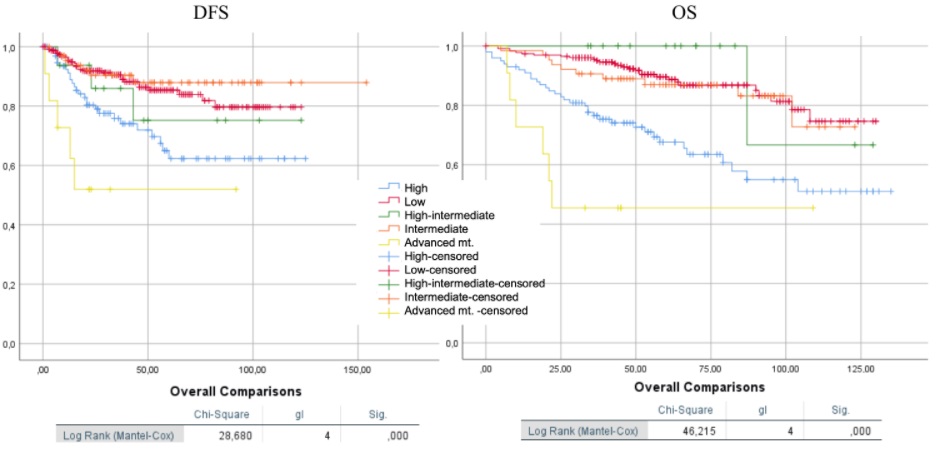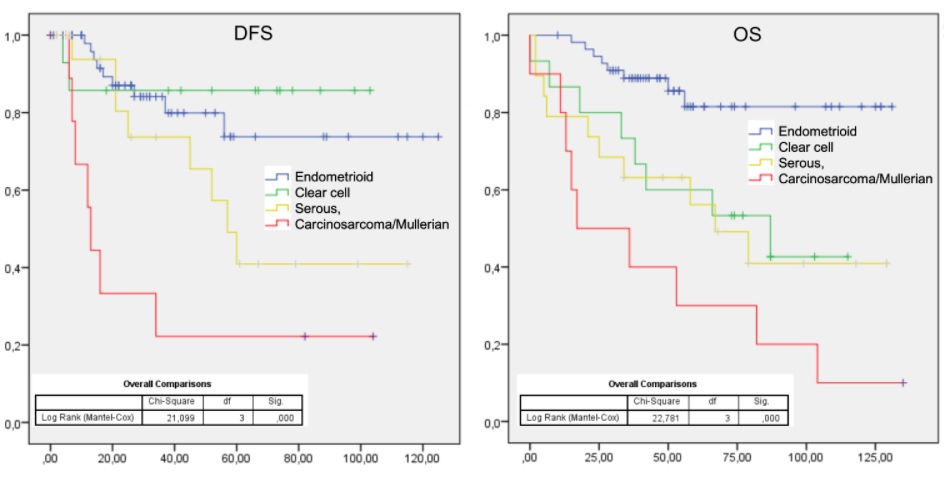Retrospective validation of new prognostic classification in endometrial cancer
PO-1342
Abstract
Retrospective validation of new prognostic classification in endometrial cancer
Authors: Ignacio Visus1, Diego Aldabe2, Sonia Lapeña3, Orencio Tarrio3, Sara Aguirre3, Juan Carlos Muruzabal3, Marta Barrado1, Amaya Sola1, Elena Villafranca1, Enrique Martinez1
1Complex Hospital of Navarre, Radiation Oncology, Pamplona, Spain; 2La Paz Univertisty Hospital, Radiation Oncology, Madrid, Spain; 3Complex Hospital of Navarre, Gyneacology and Obstetrics, Pamplona, Spain
Show Affiliations
Hide Affiliations
Purpose or Objective
To assess correlation with prognostic risk groups with disease free survival (DFS) and overall survival (OS) in patients with endometrial cancer (EC) and to study the impact of histological subtypes in DFS and OS inside high-risk group.
Material and Methods
We performed a retrospective analysis of patients diagnosed with EC within a single center multidisciplinary unit of gynecology cancer from 2010 to 2018. Patients were treated with surgery and depending on clinical and pathological factors with adjuvant treatment. This treatment was chosen, in general terms, based on the prognostic risk classification: low risk: no adjuvant; intermediate risk: adjuvant brachytherapy; high risk: EBRT and brachytherapy with or without chemotherapy. With SPSS v25, survival rates were performed using Kaplan Meier mode and a Log-rank test was performed to compare the survival curves of different groups.
Results
448 patients were analyzed. The mean age was 65,6 years and the median follow-up was 38 months. 3 and 5 years DFS is 86% and 79%. The OS at 3 and 5 years is 89% and 83%. Figure 1 shows the DFS and OS based on the prognostic risk groups. We also carry out a survival analysis of patients from the high-risk group based on the histological type (Figure 2). With a Chi-square value of 22,7, the Log-rank test shows statistically significant differences between these patients.

Figure 1.

Figure 2.
Conclusion
Both DFS and OS are adequately correlated with the new prognostic risk group classification at diagnosis. The histological subtype is an important predictor for both DFS and OS in the high-risk group.